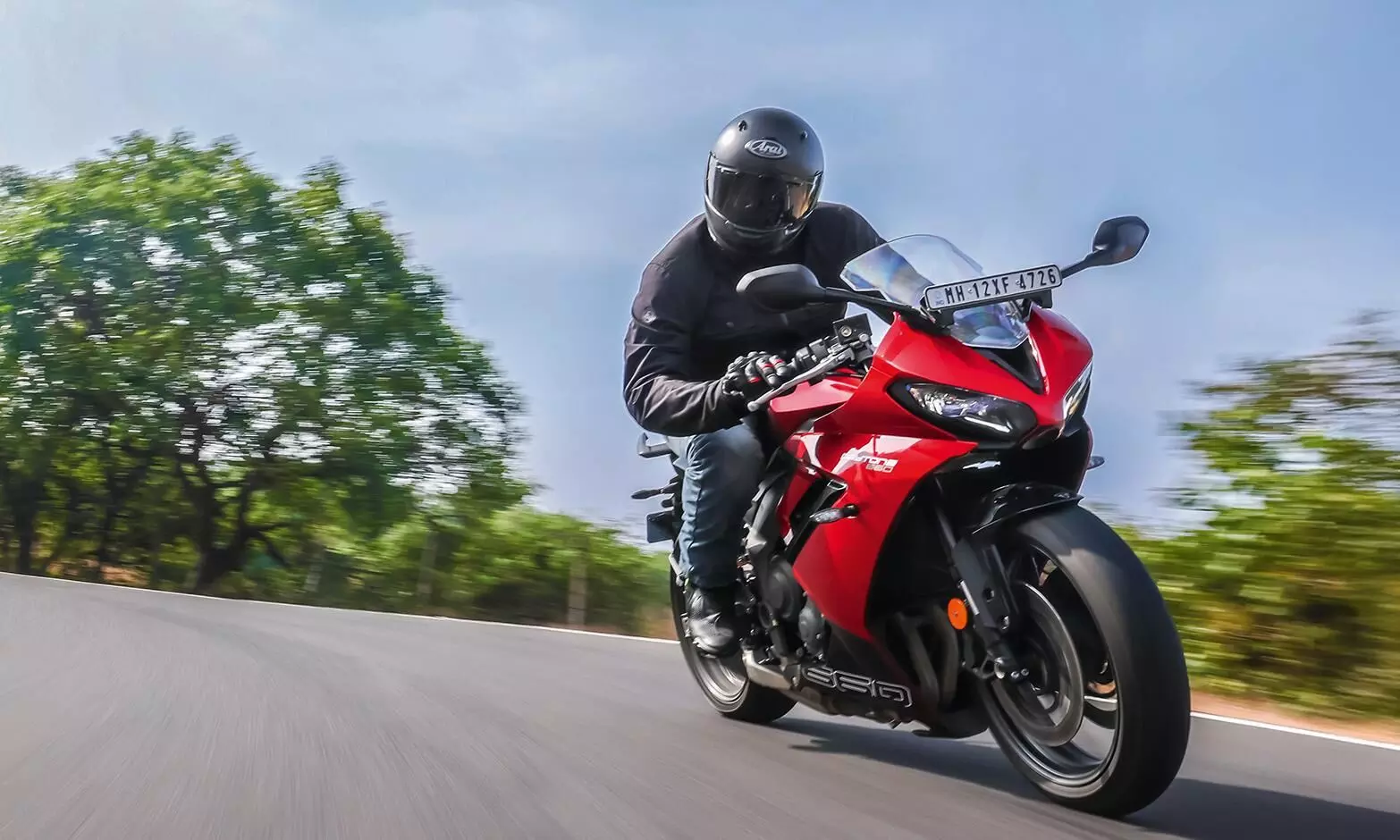
Bike Reviews
Triumph Daytona 660 first ride review: Is it worthy of the name?
The Daytona name has been revived after a few years of absence. But this time around it comes with a smaller beating heart and sport touring intentions.
- Design
- Build quality
- Engine
- Software
- Suspension setup
- Braking
Whistle - /wIsl/ - a clear, high-pitched sound made by forcing breath through a small hole between partly closed lips, or between one’s teeth. The fairer sex will probably associate this sound with being cat called. Jocks will associate it with a reminder that it’s time to throw the ball across the field. But two-wheeler enthusiasts will associate this sound with an angry Triumph Daytona 675 chasing the redline before dropping two gears and cranking over for a tight corner. This sound and that iconic model are now sadly a thing of the past, for there is a new Daytona in town. The Daytona 660 is the latest faired sport bike from Hinckley but this time around it’s a sport tourer, one that is aimed at being just as easy to live with in the urban jungle as it is to hoon around on in the twisties.
Triumph Daytona 660: Design
Clothes are what make the man and to that end the Daytona 660 has a familiar design. It looks like an angrier and a more purposeful Tiger Sport 660 and in more ways than one, it is. But if you do see a bit of the 675 in it, it’s because the same design team has worked on both machines. The front is laden with two aggressive LED headlights separated by an air intake, above which sits a fairly tall windscreen. The fairing extends all the way to the sides and reveals just the clutch and crank cases on either side. The rear section is also familiar with a tail section that is similar to that of the naked Trident 660 and the adventurous Tiger Sport 660.
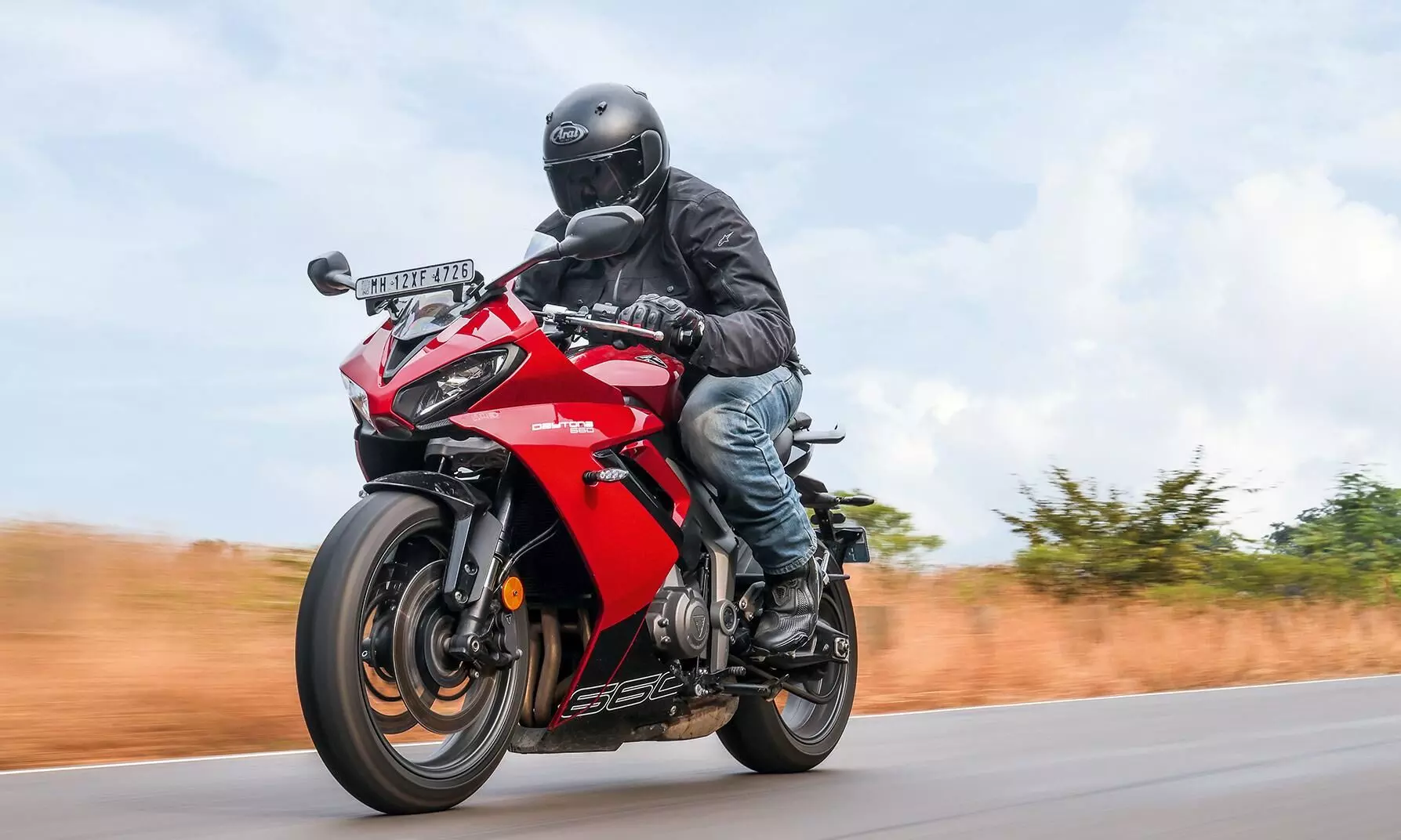
The red shade that our media unit was draped in looked particularly stunning and received a lot of compliments from fellow motorists. -Shot by Rohit G Mane for Evo India
The Daytona 660 comes in three different colours, the names of which have four syllables more than they should. There’s a white with black, a grey with black and the red with, you guessed it, black. All three colours look great and the red one that our media unit was draped in looked particularly stunning and received a lot of compliments from fellow motorists. On the styling front, the design teams at Hinckley have done a good job to give the Daytona 660 an identity of its own while giving it a sense of belonging in the rest of the 660 range.
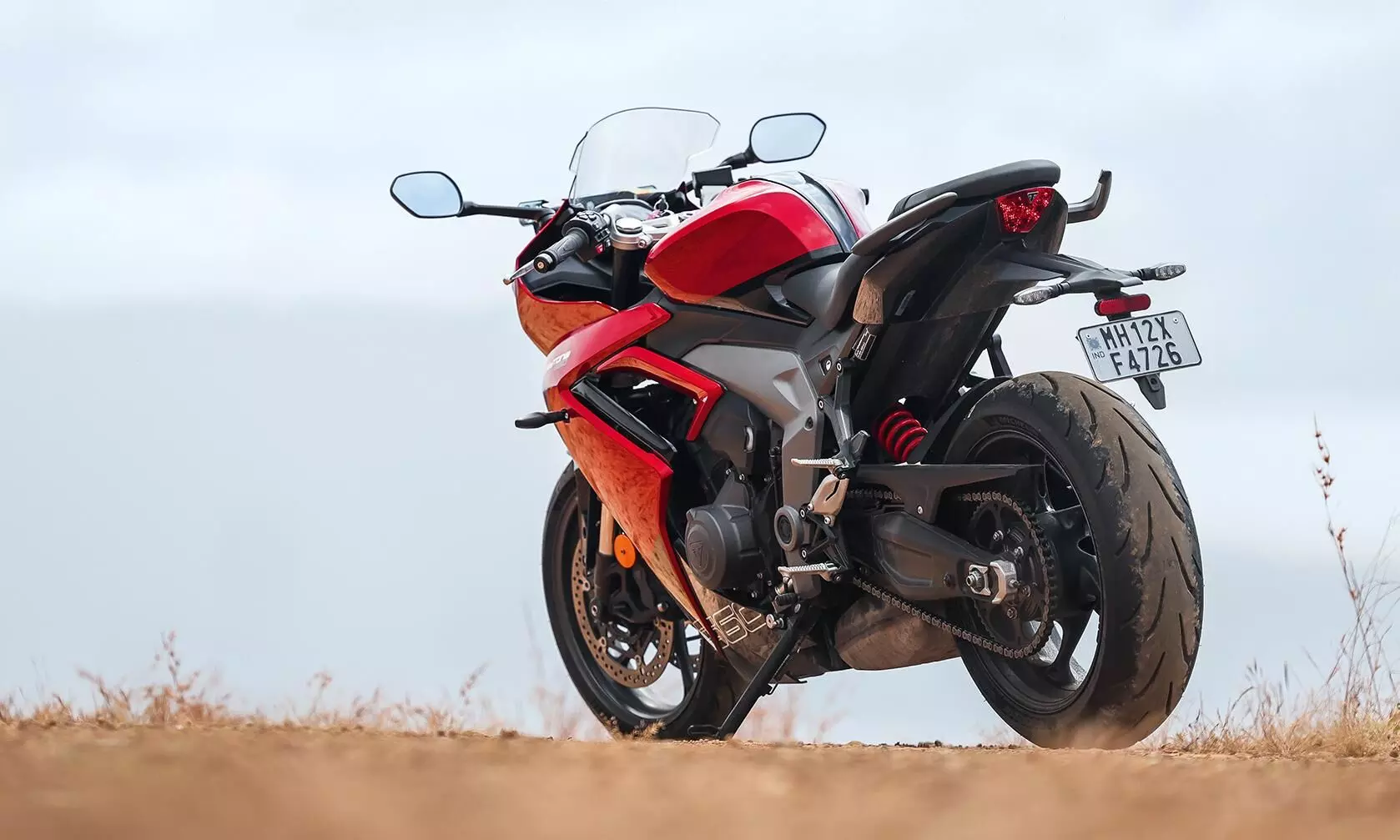
Triumph Daytona 660: Engine and performance
Powering the Daytona 660 is the same 660cc triple engine that does duties in the Trident 660 and the Tiger Sport 660. But to make the Daytona feel a smidge more special, as it should, the tune on the engine is a little aggressive. The engine internals have been reworked and tinkered with to improve performance across the board. To that end, we’re talking about 93.7bhp and 69Nm of torque up from the 79.8bhp and 64Nm of torque that the mill on the Trident 660 churns out. Peak power and torque are also made at 1000rpm and 2000rpm, respectively, higher than the naked bike at 11,250rpm and 8,250rpm.
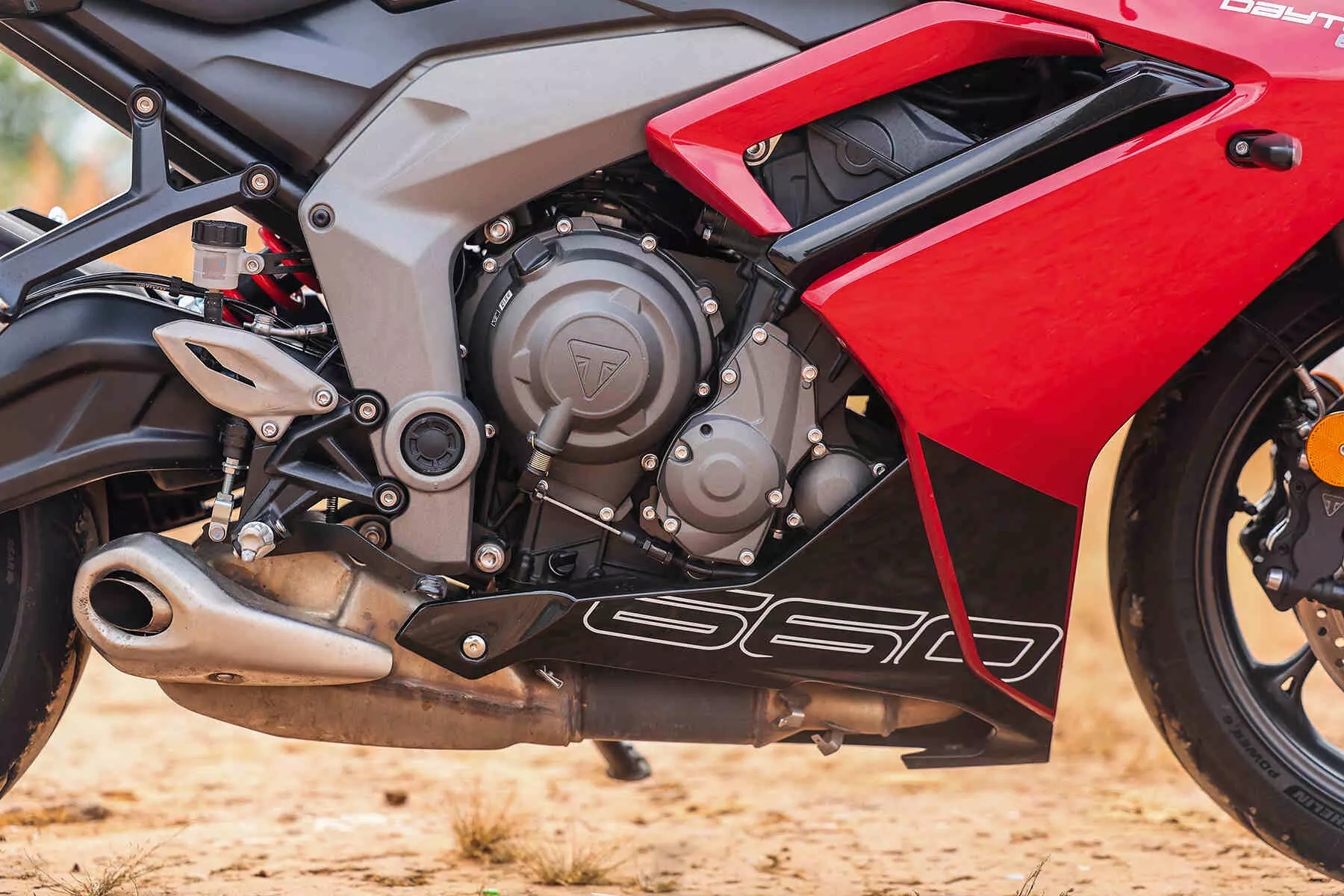
Coming to the feel of the performance that is available, the Daytona with all the extra firepower it packs feels lively and the versatility of the triple engine really shines. The way the gear ratios are spread out and the final drive make for an engine that is fairly comfortable trundling around at low revs, has good enough grunt to cruise comfortably at 500-600rpm with enough poke to make quick overtakes without needing to downshift and also thoroughly enjoys being wrung out until the redline for those crisp upshifts on your high-speed runs. 100-120kmph comes in about 6000rpm and the engine is quite unstressed at this point with barely any vibrations to complain about. The exhaust has also been worked on to add more aural pleasure to the equation and it does sound good. The engine is mated to a six-speed gearbox with a slip and assist clutch and clutch action is fairly light with slick and tactile gear shifts. One thing that Triumph should have done is offer the bike with a quick shifter as standard fitment and not as an accessory after the fact. That would have aided in improving the ‘sport’ riding quotient by a fair margin and would have improved the overall experience that much more.
Triumph Daytona 660: Chassis, ride and handling
Owing to the fact that the bike is now a sport tourer and not a supersport, the ergonomics are more relaxed and are aimed at offering a more balanced riding position, one that is more adept at taking to the urban jungle and attacking the canyons, without needing a weekly chiropractor appointment. The pegs are marginally rear-set and not too high, and reaching out to wide clip ons doesn’t feel like the curvature of your spine is being altered. That said, it isn’t too relaxed either and you won’t be complaining about cornering clearance unless you’re using up every inch of your tyres. The saddle height is set at a comfortable 810mm and the bike is narrow in all the right places and that means that riders, irrespective of the wonders gravity works on them, should be able to comfortably get their feet down. The ride and handling setup is one that is tailored to comfort and the ability to take on the abuse that a variety of roads will have to offer. What this means is that you get a really plush ride and the bike does reasonably well over our lunar roads.
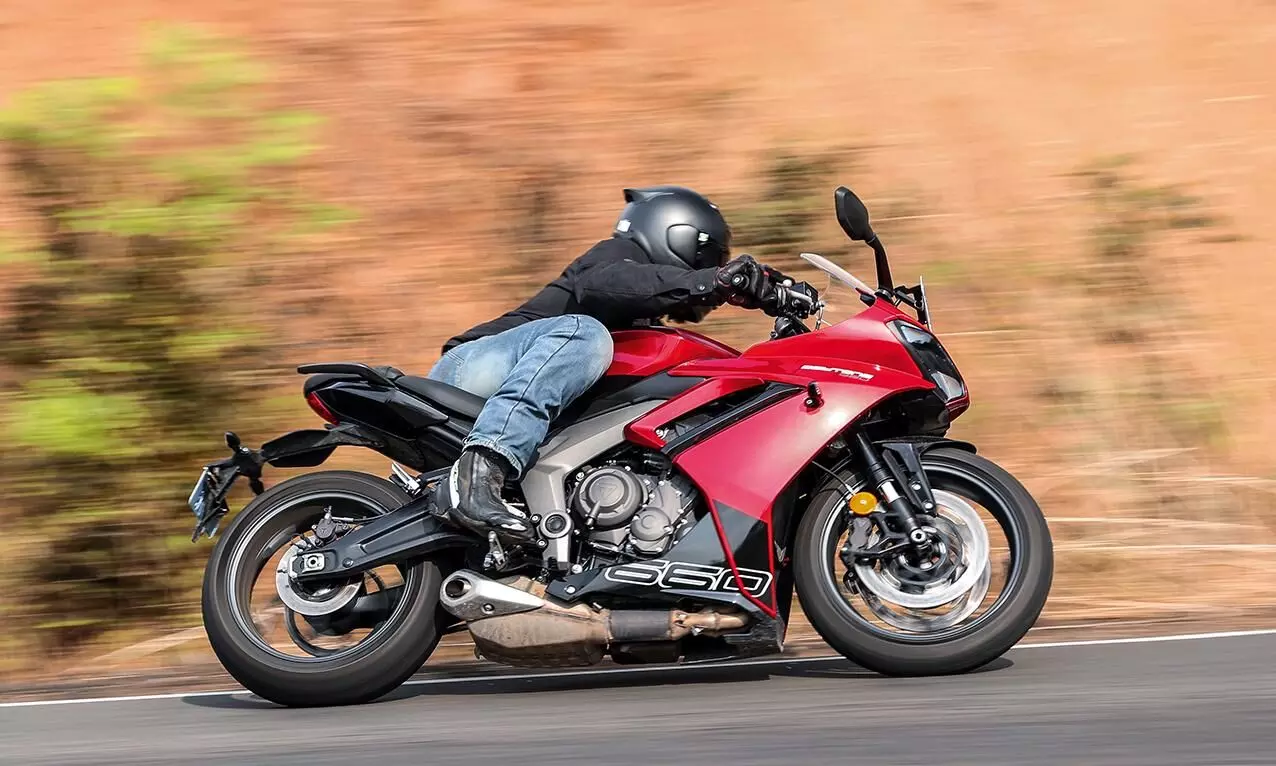
The ride and handling setup is one that is tailored to comfort and the ability to take on the abuse that a variety of roads will have to offer. -Shot by Rohit G Mane for Evo India
There’s a certain poise to the way it deals with bad roads and you’ll really appreciate that considering you’re not sat particularly upright and standing up to absorb the nasty bumps won’t be the most natural body movement. This same plushness is what gets in the way of making the Daytona an exceptional handler. The softness translates to a bike that is fun in the corners as long as you’re riding at 7/10ths, unless the quality of tarmac is supreme. The smaller bumps and ripples do unsettle the bike ever so slightly when leaned over and this does rob you of some precious feedback.
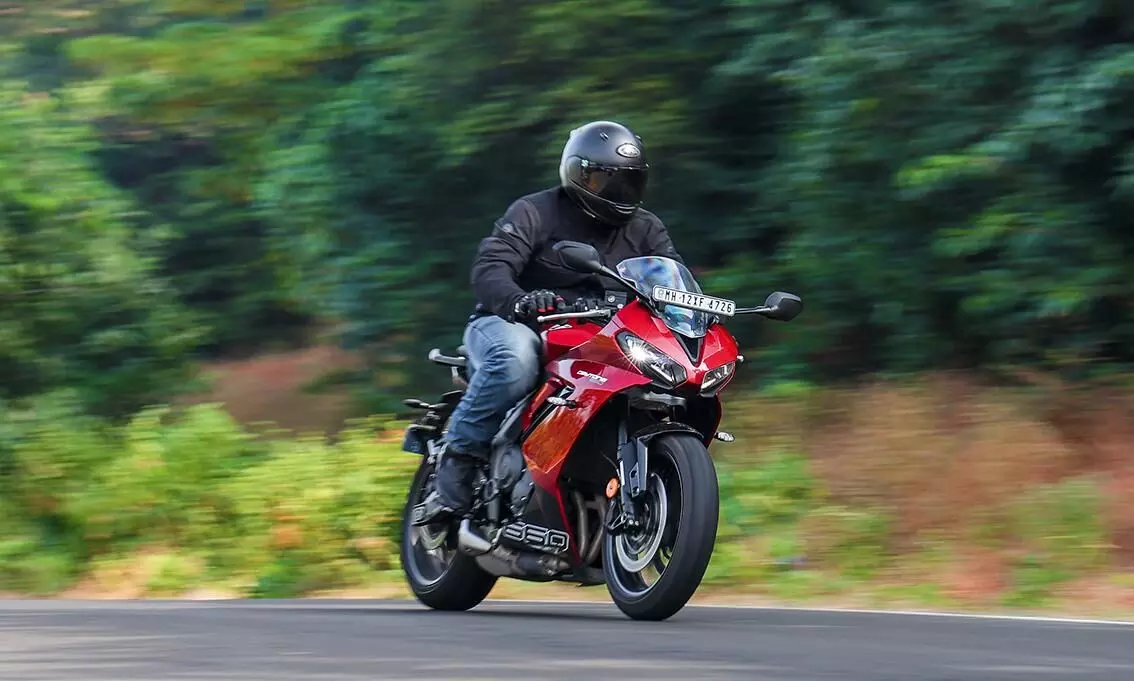
The twin 310mm discs with the four-piston callipers have a lot of performance to offer. -Shot by Rohit G Mane for Evo India
Even when it comes to braking, the twin 310mm discs with the four-piston callipers have a lot of performance to offer but the initial bite isn’t as sharp as I would’ve liked. This could be down to the fact that the suspension is set up soft and sharper bite would result in more aggressive fork dive, but it’s something I felt could be better. Emergency braking at higher speeds more often than not results in you bottoming out the travel of the suspension and it won’t allow you to deal with smaller bumps on the road under braking properly. Don’t get me wrong, the system works flawlessly for the most part, it is only when you really push it that you feel the shortcomings. The same holds true for the handling. Steering is responsive and linear and very precise. The bike turns in well and holds the line well as long as you aren’t pushing too much. The Michelins are grippy and confidence inspiring. At 201kg, you do feel a bit of the heft at standstill but that quickly disappears when you get going.
Triumph Daytona 660: Features and equipment
The throttle on the Daytona 660 is a ride-by-wire unit with three different ride modes to choose from – rain, road and sport. For the city and the highways, I preferred sticking the bike in road mode as the throttle response was sharp but not too aggressive allowing for better granular control. Sport mode on the other hand feels a little sharper and doesn’t respond too kindly to low-speed adjustments and is best enjoyed when riding hard. The bike also gets a switchable traction control system that tailors the intervention based on the riding mode you are on and you can switch it off altogether as well. While it is a big improvement over the system on the Tiger Sport 660 and the Trident, TC intervention is still on the higher side and you need pristine roads to not trigger the system, roads that we don’t come across too often.
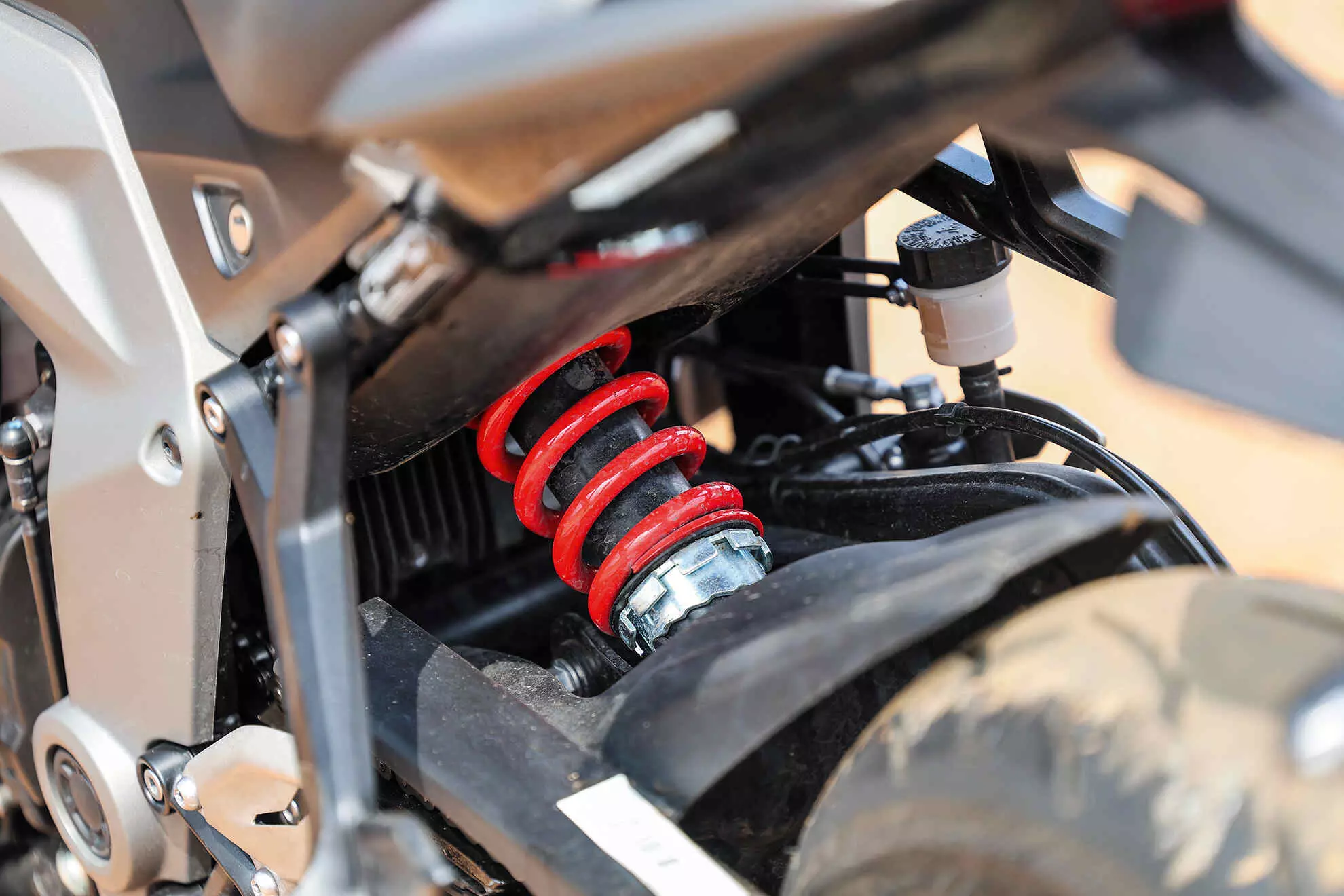
Underpinning the Daytona 660 is a tubular steel perimeter frame that hangs off of a 41mm Showa USD Big Piston Separate Function fork at the front and a Showa monoshock at the rear, the only adjustability available is for preload on the monoshock. The bike rolls on 17-inch wheels shod in Michelin Power 6 tyres. In terms of features, you get a similar screen setup as the other 660s with similar control switches as well. Connectivity is a paid extra and that’s about as long as the feature list is. In typical Triumph manner there is a whole host of accessories for the Daytona as well.
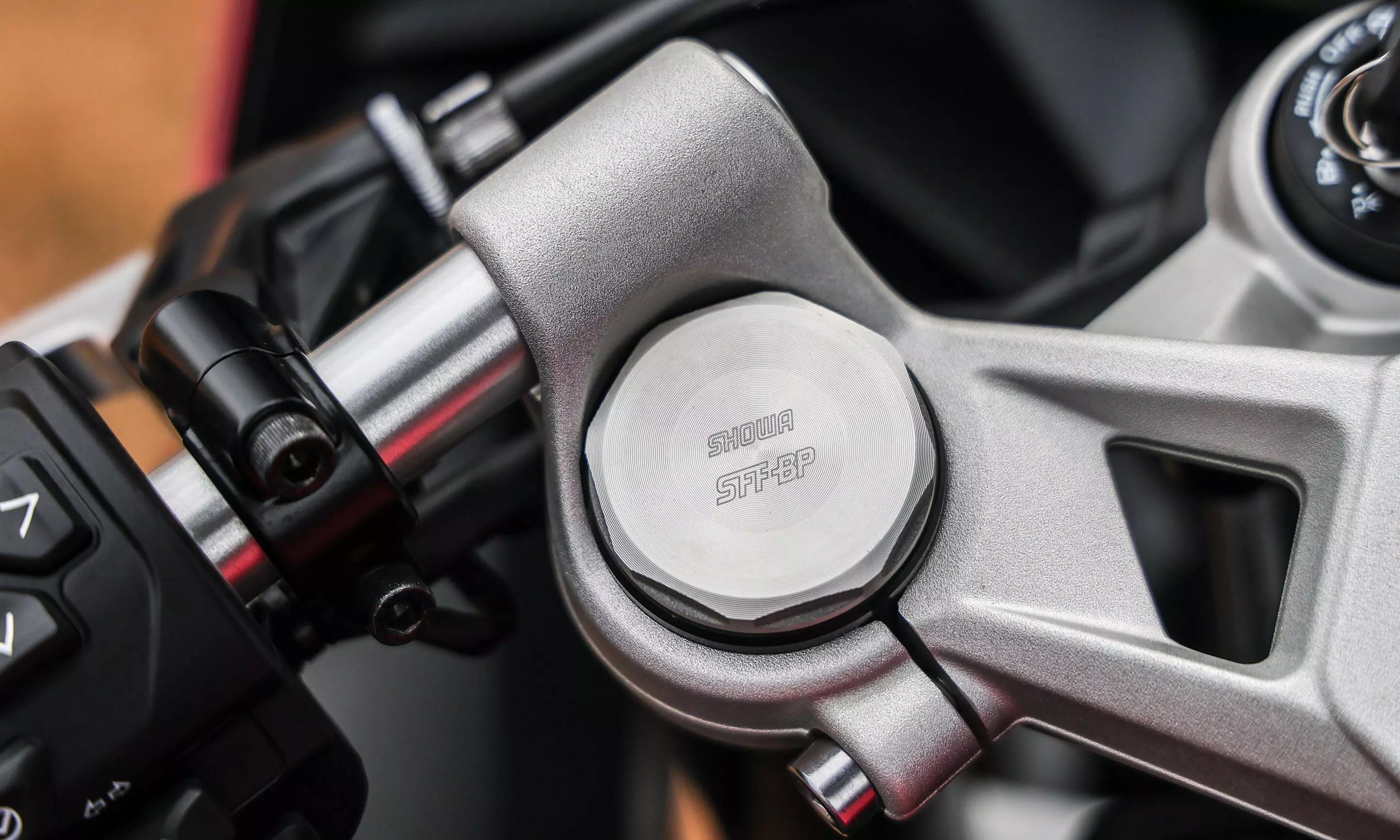
Triumph Daytona 660: Verdict
At ₹9.72 lakh, ex-showroom, the Daytona 660 offers good value for money and does a stellar job as a sport touring machine. But is it worthy of the Daytona tag? The problem is this, most of us on the right side of 40, remember the Daytona as being this scalpel-like supersport that looked like a million bucks when standing still and had all the handling telepathy one could ask for. But a quick dive into the history books will reveal that the Daytona name has been used on successful sport touring models by Triumph in the past and it is just life coming full circle. More importantly, with the current political situation surrounding middle-weight supersports, what with the castrating emission norms and lesser demand, manufacturers are finding it increasingly difficult to make models like the Daytona 675 a reality. With that in mind and with the love goggles off, in all honesty the Daytona 660 is all the sports bike most people will need, should you choose to look past the name.


